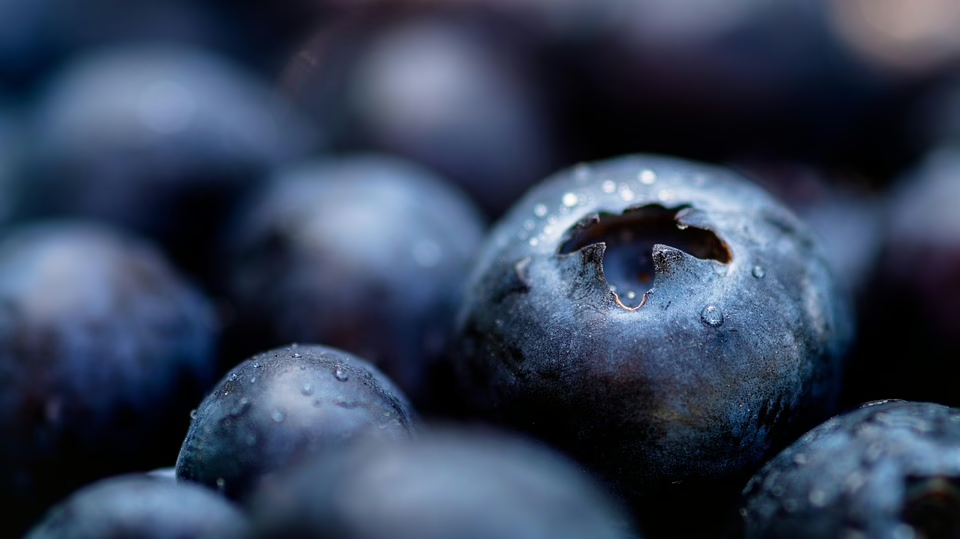Smart Snacking: How to Use Nutrition Facts to Fuel Your Body
In the age of fast-paced lifestyles and constant demands on our time, snacking has become a popular practice for many. Whether it’s between meetings, during commutes, or as a quick fix for a mid-afternoon slump, smart snacking plays a crucial role in maintaining energy and overall health. However, with the multitude of snack options available, understanding how to make informed choices based on nutrition facts can be vital for optimal fueling. This article delves into the world of smart snacking, exploring the importance of nutrition facts, tips for selecting healthy snacks, and how to integrate them seamlessly into your diet.
The Importance of Smart Snacking
Snacking is a long-standing habit, but the choices we make can significantly impact our health and well-being. Smart snacking offers several advantages:
-
Sustained Energy Levels: Consuming snacks that are rich in nutrients can provide a steady source of energy throughout the day, preventing the dreaded energy crashes that often accompany high-sugar snacks.
-
Nutrient Density: Healthy snacks can be a way to bridge the nutritional gaps in our diets. They can provide vitamins, minerals, and other beneficial compounds that our bodies need to function optimally.
-
Weight Management: Contrary to popular belief, strategic snacking can aid in weight management by preventing hunger and reducing the likelihood of overeating during meals.
-
Cognitive Function: Consuming brain-boosting snacks can enhance focus, memory, and overall cognitive performance, crucial for both students and professionals.
-
Health Benefits: Selecting snacks that are high in fiber, healthy fats, and protein can promote heart health, better digestion, and improved mood.
Given these advantages, it’s essential to understand how to decode nutrition facts to make educated choices about snacking.
Deciphering Nutrition Facts
The Nutrition Facts label on packaged snacks can be overwhelming at first glance, but breaking it down can simplify the decision-making process. Here’s a guide to understanding key components of the label:
1. Serving Size
Serving size is the first thing you should look for. This number dictates the nutritional values listed on the label. Many people consume more than the suggested serving size, which can lead to miscalculating their caloric intake and other nutrients. Always compare your portion with the serving size listed.
2. Calories
Calories are essential as they provide the energy needed for daily activities. When snacking, it’s crucial to choose options that offer a good balance of calories for the nutrients they provide. A good rule of thumb is to aim for snacks ranging from 100 to 200 calories.
3. Total Fat and Types of Fat
Fats are an important part of any diet, but the type of fat matters:
- Saturated Fat: Found in animal products and some processed foods, it should be consumed in moderation.
- Trans Fat: Often found in partially hydrogenated oils, trans fats are harmful and should be avoided entirely.
- Unsaturated Fats: These are healthier fats that can come from sources like avocados, nuts, and fish.
Always check for trans fats and try to consume healthy unsaturated fats instead.
4. Cholesterol and Sodium
While cholesterol plays a role in body function, excessive intake can lead to health issues. Likewise, sodium is necessary but can contribute to high blood pressure if consumed in excess. Choose snacks that are low in both cholesterol and sodium to promote heart health.
5. Total Carbohydrates
Carbs are the body’s primary energy source. Look for complex carbohydrates (fiber and whole grains) rather than simple sugars, which lead to spikes in blood sugar. The fiber content is particularly important as it helps with digestion and keeps you feeling full.
6. Sugars
Be cautious of added sugars, which can lead to weight gain and energy spikes followed by crashes. Natural sugars found in fruits are generally healthier as they come with fiber and essential nutrients.
7. Protein
Protein is essential for muscle repair and growth. A higher protein content in snacks can help you feel fuller for longer. Aim for snacks with at least 5 grams of protein per serving.
8. Vitamins and Minerals
Take note of the % Daily Value (DV) for vitamins and minerals. A higher DV suggests that the food is a good source of that nutrient. Look for snacks that are rich in various vitamins and minerals to ensure a well-rounded diet.
Tips for Smart Snacking
After familiarizing yourself with nutrition facts, it’s time to implement smart snacking into your routine. Here are some practical tips:
1. Plan Ahead
Preparation is key to avoiding unhealthy snack choices. Keep a variety of healthy snacks readily accessible at home, work, or in your bag for when hunger strikes. Snacks like cut-up veggies, fruits, or mixed nuts are portable and nutritious.
2. Balance Your Snacks
Aim for a balance of macronutrients—proteins, fats, and carbohydrates. For instance, pairing an apple with almond butter offers fiber, healthy fat, and protein, promoting satiety.
3. Mindful Eating
Take the time to savor your snacks rather than mindlessly munching. This can help you tune into your hunger signals and prevent overeating. Mindful eating also enhances the enjoyment of your food.
4. Watch for Portion Sizes
Use measuring cups or a kitchen scale to portion out snacks, especially those that are calorie-dense like nuts or seeds. This can prevent mindless overconsumption.
5. Stay Hydrated
Sometimes thirst is mistaken for hunger. Keep yourself hydrated by drinking plenty of water throughout the day. If you feel peckish, drink a glass of water and wait a few minutes to see if the craving persists.
6. Experiment with Healthy Snacks
Explore a variety of snack options to keep your palate excited. Try making homemade trail mix, yogurt parfaits, or energy bites to customize your snacks according to your taste.
7. Choose Whole Foods
When possible, opt for whole foods over packaged snacks. Fresh fruits, vegetables, whole grains, and lean proteins are often more nutritious and free from preservatives and additives.
8. Be Wary of Marketing
Don’t be misled by health claims on packaging. Terms like “natural” or “organic” do not necessarily mean a product is healthy. It’s essential to read the nutrition facts for a proper assessment.
Smart Snacking Ideas
Here are some smart snacking ideas that incorporate a variety of flavors and nutrients:
1. Greek Yogurt with Berries
A serving of Greek yogurt topped with fresh berries can offer a protein-packed, antioxidant-rich snack. The fiber from berries adds to the nutrient profile.
2. Nut Butter with Apples or Celery
Spread almond or peanut butter on apple slices or celery sticks. This combination provides healthy fats, protein, and fiber, making for a filling snack.
3. Hummus and Veggies
Hummus, made from chickpeas, is an excellent source of protein and fiber. Pair it with an assortment of veggies like carrots, bell peppers, and cucumbers for a crunchy snack.
4. Whole Grain Crackers and Cheese
Opt for whole-grain crackers paired with a slice of cheese for a balanced snack rich in carbohydrates and protein.
5. Overnight Oats
Prepare overnight oats with rolled oats, milk, chia seeds, and your favorite fruits. This snack is not only filling but also nutritious.
6. Rice Cakes with Avocado
Top whole-grain rice cakes with smashed avocado and sprinkle with salt and pepper. This snack provides fiber and healthy fats.
7. Fruit Smoothie
Blend up a quick smoothie with spinach, banana, and almond milk for a refreshing and nutrient-packed drink.
8. Dark Chocolate and Nuts
If you have a sweet tooth, opt for a small serving of dark chocolate (at least 70% cacao) with nuts for a satisfying treat.
Conclusion
Smart snacking is a powerful tool in maintaining energy levels, supporting cognitive function, and promoting overall health. By understanding how to read nutrition facts and make informed choices, you can ensure that your snack habits enhance your diet rather than detract from it. With a variety of healthy options available and some mindful planning, indulging in snacks can undoubtedly complement a balanced lifestyle, paving the way for optimal fuel and vitality in your day-to-day activities.
References
- American Heart Association. (2022). Snacking in America: Insights and Best Practices. Retrieved from American Heart Association
- U.S. Food and Drug Administration. (2021). Nutrition Facts Label. Retrieved from FDA
- Harvard Health Publishing. (2022). Smart Snacking: Why Snacking Can Be Good for You. Retrieved from Harvard Health
- Academy of Nutrition and Dietetics. (2022). Healthy Snacking Tips. Retrieved from Eat Right
- Mayo Clinic. (2022). Healthy Snacking: How to Make Smart Choices. Retrieved from Mayo Clinic
This article is just an overview for motivational purposes, and individuals should consult healthcare professionals for personalized dietary advice.


























Add Comment